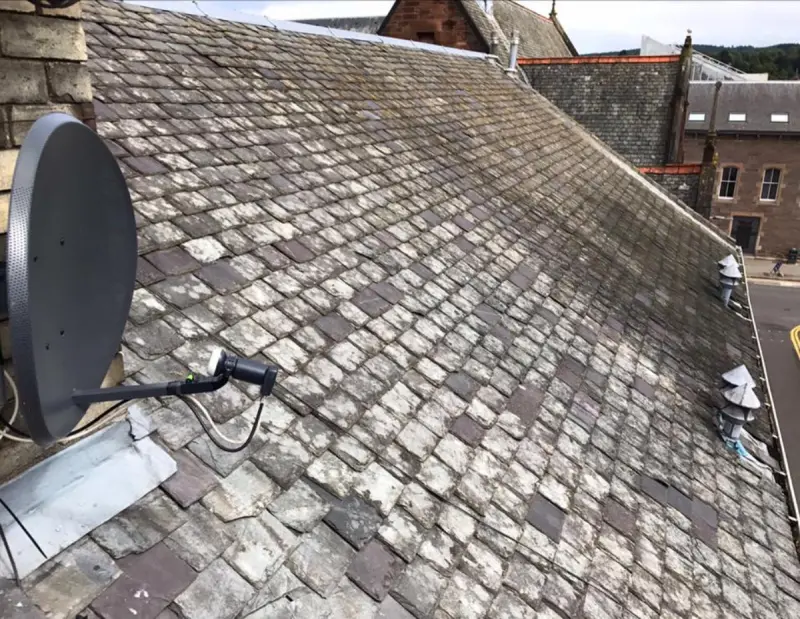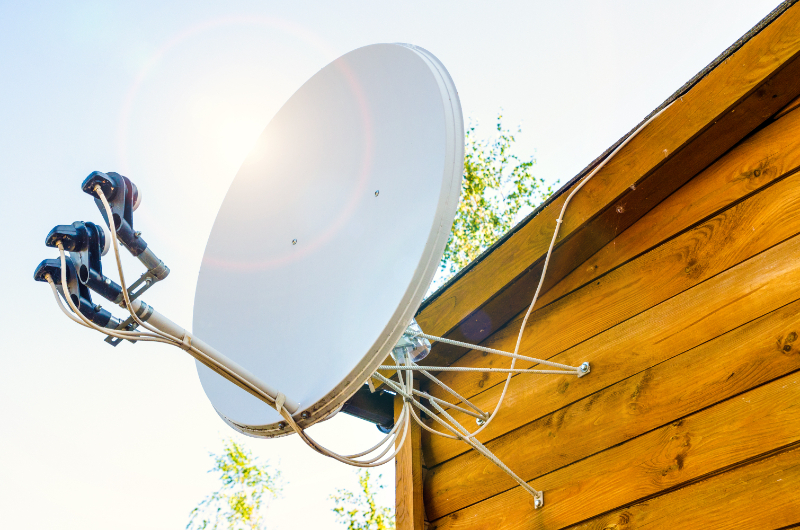Understand the difference between Starlink and regular internet. Compare satellite-based Starlink to traditional broadband services, looking at speed, availability, latency, and how each can impact your online experience.
Starlink Uses Low Orbit Satellites
Starlink relies on low Earth orbit (LEO) satellites to provide internet. These satellites are positioned at an altitude of approximately 550 kilometres above the Earth. This is closer than traditional satellite systems, which typically operate at much higher altitudes in geostationary orbits - around 35,000 kilometres above the Earth.
The advantage of using LEO satellites lies in their proximity to the Earth. Since the distance data travels between the satellite and the ground is shorter, Starlink provides internet speeds and latency that are comparable to fibre-optic options. Traditional satellites have a higher latency due to the longer travel distance, which often results in slower speeds and less reliable connections.
Starlink’s low-latency and high-speed service is a game-changer for users, especially for gamers. The closer positioning of these satellites ensures that data travels a shorter distance. LEO satellites can also provide internet to remote areas. Traditional satellite internet often struggles with coverage and speed issues in these areas due to its high latency. With Starlink's LEO network, people in rural and hard-to-reach areas now have access to reliable internet.
The use of low-orbit satellites allows Starlink to offer high-speed, low-latency internet that rivals traditional fibre-optic options. By overcoming the limitations of satellite systems, Starlink makes the internet more accessible.
Which Is More Reliable? Regular or Starlink?
When deciding between regular and Starlink internet, reliability is a big concern. Regular internet generally refers to fibre or coaxial cable connections. Each has its own advantages and limitations. Fibre internet is renowned for its exceptionally fast speeds and stable connection.
Fibre optic cables, which transmit data using light, are buried underground. This underground placement offers protection from weather conditions, making interference rare. As a result, fibre internet has low latency, which is crucial for streaming and gaming.
For people who need a consistent high-speed connection, fibre optic technology is often the better choice. Coaxial cable internet, another type of regular internet, also provides a reliable service. Although it may not achieve the ultra-high speeds that fibre can, it is still a solid option for everyday internet.
Similar to fibre, cable internet typically delivers consistent performance. Its main limitation, however, lies in its availability. In many rural areas, the infrastructure needed to support fibre or cable internet doesn't exist. This is where alternative solutions like Starlink come into play. Starlink uses a satellite dish to connect to low-orbit satellites. These satellites are much closer to the Earth and provide lower latency.
However, Starlink can be affected by the weather, as it relies on external equipment. This means that while Starlink can offer high-speed internet, it might not be as consistently reliable. In addition to fibre and coaxial internet, there's wireless internet, which uses routers.
While it's convenient and widely available, wireless doesn't achieve the speeds and latency that Starlink can. This makes wireless internet a practical option for general browsing and light streaming, but it may fall short in areas with high demand.

Starlink Is More Expensive
One notable difference between Starlink and regular internet is the cost. Starlink tends to be more expensive and the monthly fee can be higher than most internet plans. This is partly due to the advanced technology, such as the satellite dish and antenna. Regular internet, especially fibre, can often be cheaper and offer similar speeds.
The initial set-up cost for Starlink can also be high. Buying or renting the necessary satellite equipment can add to the monthly expenses. However, for those in areas where fibre or coaxial aren’t available, the benefits of having access to high-speed internet can outweigh the cost. Due to its wide-reaching capability, Starlink can reach remote areas, making its cost justifiable for many.
While Starlink might be more expensive, it offers a crucial service for remote areas. For some, the cost can be justified by having access to reliable, high-speed internet that would otherwise be unavailable. The choice between Starlink and regular internet ultimately comes down to individual needs and location.
Starlink Internet Is Faster Than Most
One major advantage of Starlink is its speed. Starlink provides faster speeds compared to most traditional satellite internet services. This allows for quick downloads, smooth online gaming, and seamless video streaming. Most internet services, with their higher latency and slower speeds, can’t match Starlink in performance.
One key reason for Starlink's superior speed is its use of low earth orbit (LEO) satellites. Traditional internet relies on satellites positioned far away from the Earth, which increases latency and reduces speed. However, Starlink's satellites are much closer, enabling faster transmission and lower latency. This makes online gaming and video calling much more enjoyable and responsive.
Fibre can rival Starlink in speed, but it’s not always available, making Starlink a viable alternative. Additionally, Starlink provides a lower latency connection compared to regular satellite services. Lower latency means quicker response times, making it suitable for real-time activities such as online gaming and webinars.
This advantage over traditional internet translates to a smoother and more reliable experience. However, it's essential to check for Starlink's availability in your area to ensure you can take advantage of it. With its faster speeds, lower latency, and broader availability, Starlink stands out as a great choice for people wanting reliable high-speed internet.

Wireless Or Starlink: Which Is Better For Homeowners?
When deciding between wireless and Starlink, homeowners need to consider several important factors. Both options have their own strengths and weaknesses, which can impact the quality and reliability of your internet.
Wireless internet, typically delivered through traditional routers, offers convenience and ease of installation. Many internet service providers (ISPs) offer wireless plans with straightforward setups, requiring only a modem and router to get started. However, wireless internet might not deliver the same high speeds and low latency as other options.
For streamers and gamers, internet speed and reliability are crucial. Wireless internet often suffers from slower speeds and higher latency, especially during peak usage times. This can result in buffering, lag, and other disruptions that spoil the experience. Therefore, while wireless is generally more affordable and easier to set up, it might not always meet the demands of every user.
On the other hand, Starlink is a viable alternative in areas where traditional internet options are limited. Starlink ensures that everyone can enjoy a fast and stable connection. Starlink can deliver higher speeds and lower latency compared to wireless internet. This makes it an attractive option for those requiring a more reliable connection.
However, the benefits of Starlink come with certain trade-offs. One of the main considerations is cost. Starlink requires specific equipment, such as a satellite dish, which can be more expensive than the basic hardware needed for a wireless setup.
Additionally, the monthly fees for Starlink can be higher than those for wireless. Another factor to keep in mind is the installation process. While wireless internet is usually a plug-and-play solution, Starlink requires the satellite to be positioned in an optimal location.
In summary, choosing between wireless and Starlink depends largely on your individual needs.
Discover unparalleled Starlink Installations. Fair City Aerial & Digital TV Services offer Starlink Installations throughout Aberdeen, Edinburgh And Glasgow.




